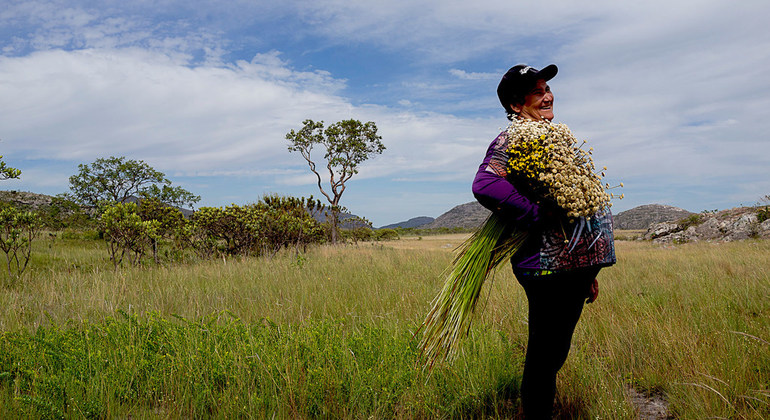The UN Food and Agriculture Organization (FAO), has, for the first time, recognized these traditional farmers who inhabit the Sempre Vivas National Park area, by including them on its global agricultural heritage list.
The Globally Important Agricultural Heritage Systems list, highlights unique ways that rural communities have worked over generations, to foster food security, viable livelihoods, resilient ecosystems and high levels of biodiversity – all while contributing to the formation of remarkable natural landscapes.
The Espinhaço’s unique ecosystems not only make the mountain range the most biodiverse on the planet but also plays a crucial role in regulating the region’s rainfall.
And the complex agricultural system, which combines flower gathering, agroforestry, livestock grazing and crop cultivation is based on a wide range of traditional knowledge and practices passed on from generation to generation, helping people achieve harmony with the environment while ensuring their food and livelihood security.
“Thanks to their profound understanding of natural cycles and ecosystems, and their vast knowledge of native flora, the local communities manage all kinds of agricultural activities well adapted to each soil type, geographic and climatic characteristics to sustain their lives,” said the FAO’s heritage list Coordinator, Yoshihide Endo. “These activities also contribute to preserving valuable crop varieties, native vegetation and landscapes in the area.”
Local activities vary from gathering, processing and conserving native flowers in the highlands, to herding livestock along centuries-old migration routes and collecting fruits and medicinal plants at lower altitudes to maintain traditional home gardens and larger crop fields along the foothills.
Unique agrobiodiversity hotspot
Generations of local communities have developed unique skills and practices to maintain genetic resources and enhance agrobiodiversity for the vegetables, fruit trees, thickened tubers, and more than 85 other crop species that are cultivated in the Espinhaço mountains.
By moving back and forth across the mountains, following traditional practices of flower gathering and livestock herding, native fields have been enriched with a crop species that have enabled ecosystems and landscapes to regenerate and become more diverse from the natural flows of seeds and genes.
And the renewal of each specie is maintained through the sustainable access and use of native flora, said FAO, aligned with natural cycles and the intensity of gathering, which is community controlled.
Highlighing rural communities, the new addition to GIAHS brings the total worldwide number to 59, in 22 countries.



